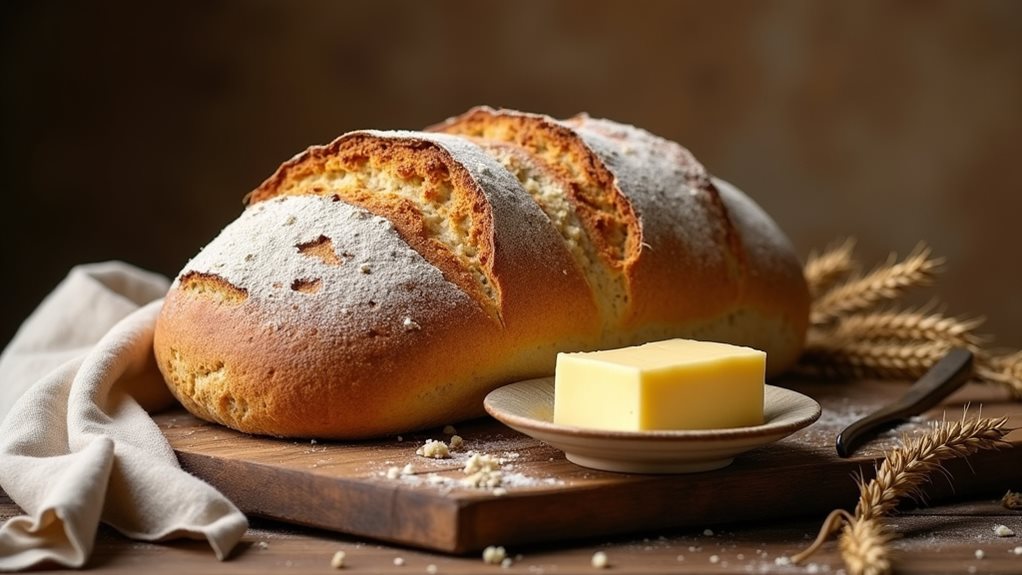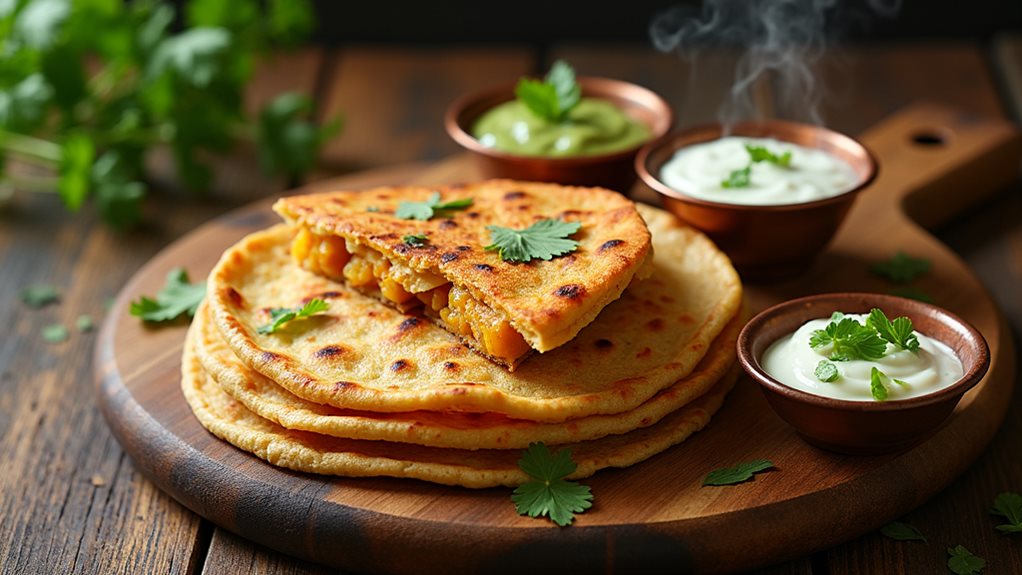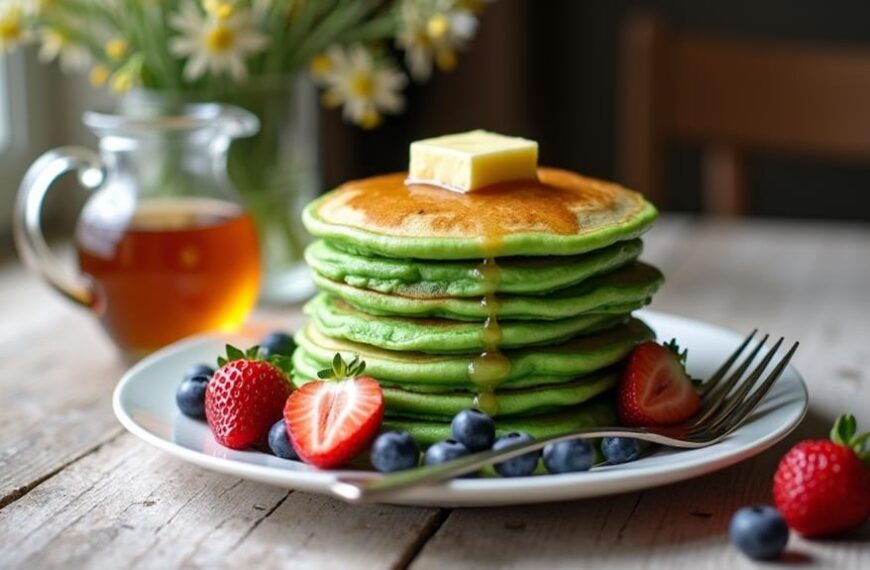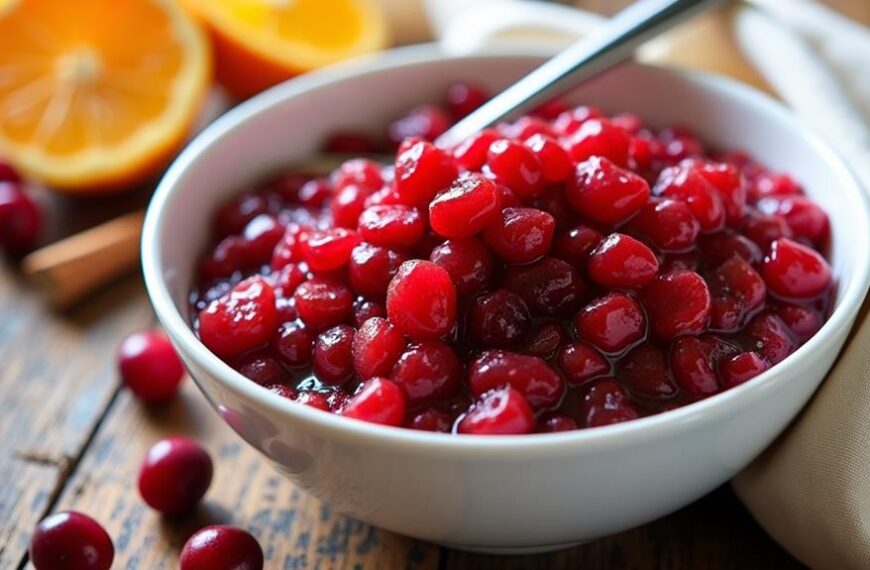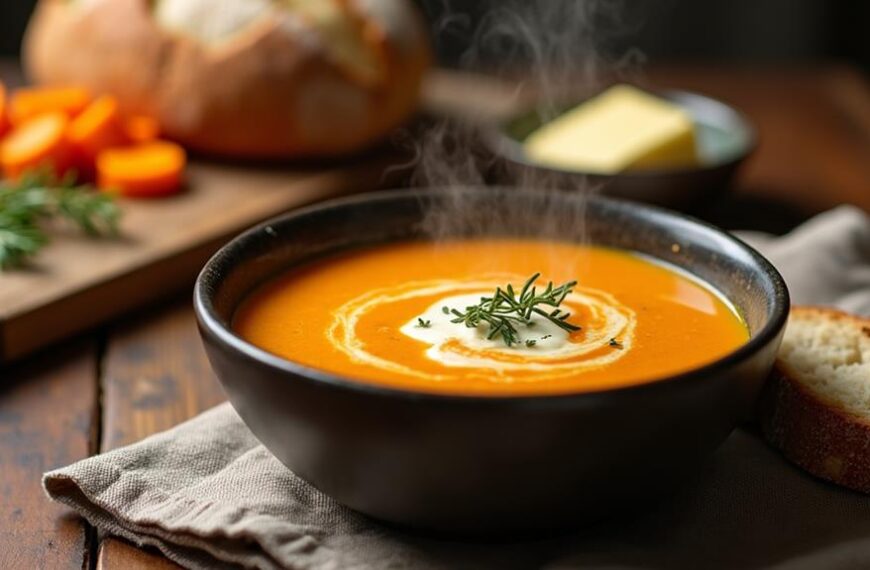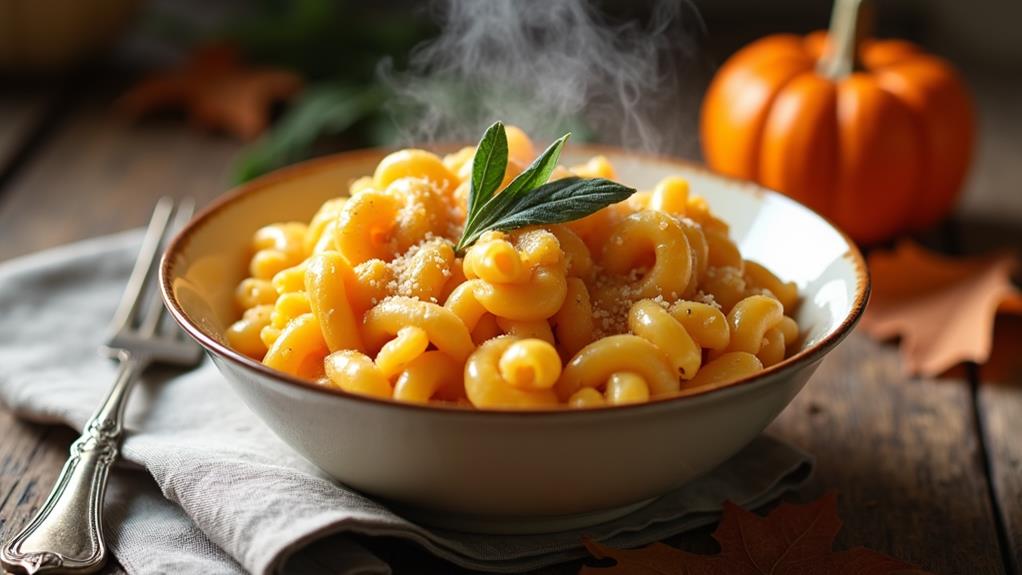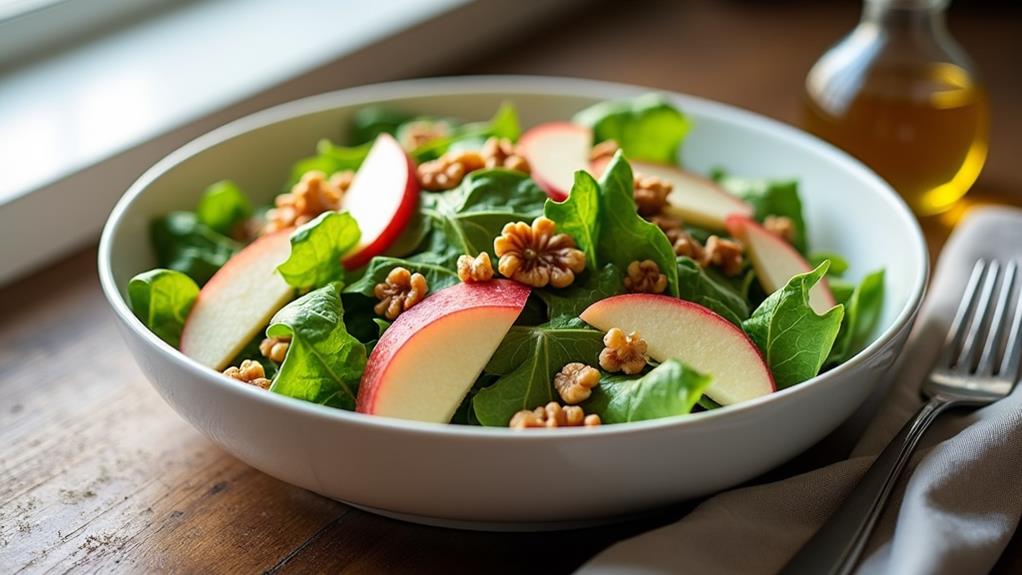I’ve been baking cob loaves for years, and I’m convinced it’s one of the most rewarding breads you can make at home. With just four simple ingredients, you’ll create a rustic loaf that rivals any artisan bakery. The crackling crust and tender interior make this bread perfect for everything from soup accompaniments to the foundation of a spectacular appetizer. Don’t worry if you’re new to bread-making—this straightforward recipe will guide you through each step to guaranteed success.
Key Takeaways
- Basic cob loaf requires only four simple ingredients: flour, water, yeast, and salt.
- Mix and knead dough for 10 minutes until even consistency, then shape using the clock method.
- Bake at 200 degrees for approximately 45 minutes, listening for a hollow sound to indicate doneness.
- The slow fermentation process develops complex flavors and creates a crackling crust with soft interior.
- Versatile recipe allows for variations like adding seeds, olives, herbs, or substituting different flours.
Why You’ll Love this Rustic Hearty Cob Loaf
This rustic cob loaf is a perfect introduction to bread making for both beginners and experienced bakers. I’ve designed this recipe to be straightforward yet rewarding, requiring just four simple ingredients: flour, water, yeast, and salt.
What I love most about this bread is its versatility—it pairs beautifully with everything from hearty soups to cheese boards.
The crust develops a wonderful crackle during baking, while the interior stays soft and chewy with an open crumb structure. You’ll appreciate how the whole wheat flour option adds nutty depth and nutritional value.
Don’t worry about fancy equipment; your hands do most of the work, creating that distinctive round shape with its characteristic cracks on top.
The slow fermentation process develops complex flavors that store-bought bread simply can’t match.
What Ingredients are in Rustic Hearty Cob Loaf?
Making a rustic cob loaf is surprisingly simple, requiring just a handful of basic ingredients that most of us already have in our pantries. The beauty of this traditional bread lies in its simplicity—no fancy additives or complicated components, just pure bread-making fundamentals that come together to create something truly spectacular.
And the best part? You can choose between whole wheat or white flour depending on your preference.
- 300g (10.6oz) strong whole wheat or white flour
- 200g (7.1oz) water
- 1.5g (0.1oz) instant yeast OR 3g dry yeast OR 6g fresh yeast
- 3g (0.1oz) salt
When selecting your ingredients, quality matters. The flour you choose will greatly impact the final flavor and texture of your loaf. Strong bread flour (also called bread flour) contains more protein than all-purpose flour, which helps develop better gluten structure and gives your cob loaf that perfect chewy interior.
As for the yeast, you have options—instant, dry, or fresh—just make sure to adjust the quantities as noted above. And don’t skimp on the salt; it might seem like a tiny amount, but those 3 grams are vital for bringing out the full flavor of your bread.
Might seem like nothing much on paper, but these simple ingredients transform into something magical in the oven.
How to Make this Rustic Hearty Cob Loaf
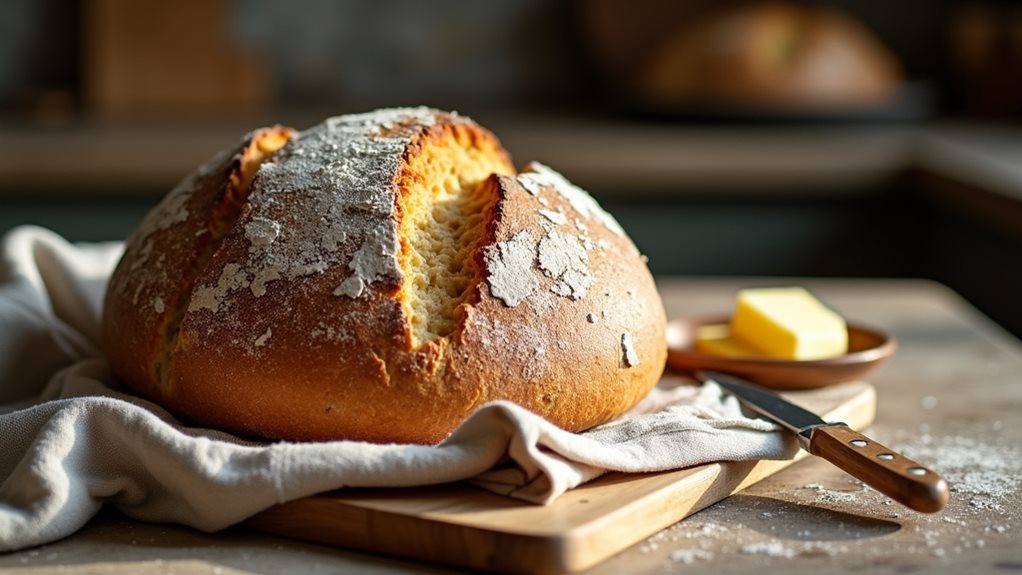
Making a cob loaf is surprisingly simple, even for those who might be intimidated by bread baking. Start by gathering your ingredients: 300g of strong whole wheat or white flour, 200g of water, just 1.5g of instant yeast (or 3g dry yeast or 6g fresh yeast), and 3g of salt.
The process differs slightly depending on your yeast type. With instant or fresh yeast, you’ll mix everything together in one go, while dry yeast requires creating a well in the flour, dissolving the yeast in half the water, and letting it rest for 15 minutes before adding the remaining water and salt.
The magic happens during kneading—a full 10 minutes of working that dough with your hands, transforming it from shaggy to even. Resist the urge to add more flour, even if it feels sticky at first.
After the dough doubles in size (about 1-2 hours), you’ll shape it using a unique clock method, pinching and folding sections around the perimeter. Then comes the most satisfying part: creating tension by stretching the dough skin around itself to form a tight ball.
Place this on parchment paper, let it rise again until doubled, and bake at 200 degrees for about 45 minutes. You’ll know it’s done when tapping the bottom produces a hollow sound—that distinctive knock that makes bread bakers smile with satisfaction.
Let it cool completely before slicing into that crusty exterior and soft interior. For future bread recipes, consider using a premium food processor to make quick work of mixing and kneading your dough ingredients.
Rustic Hearty Cob Loaf Substitutions and Variations
Several delicious variations can transform your basic cob loaf into something extraordinary with just a few ingredient substitutions.
I often replace half the whole wheat flour with rye flour for a deeper, nuttier flavor profile. You can also experiment with adding seeds—try 2 tablespoons each of sunflower, pumpkin, and flax seeds for a hearty multigrain version.
For a Mediterranean twist, fold in 1/4 cup of chopped olives and 2 tablespoons of dried rosemary before the first rise.
If you’re looking for something sweeter, incorporate 1/3 cup of dried fruit like cranberries or raisins, plus a tablespoon of honey in the initial mix.
Don’t forget that whole grain variations may require an additional 10-15g of water to achieve the right consistency.
What to Serve with Rustic Hearty Cob Loaf
While a fresh-baked cob loaf can certainly stand on its own, pairing it with complementary foods elevates it from a simple bread to the centerpiece of a memorable meal.
I love serving my cob loaf with a robust cheese board featuring aged cheddar, creamy brie, and tangy goat cheese, alongside some honey for drizzling.
For heartier fare, I’ll pair it with homemade soups—particularly tomato basil or potato leek—where the bread’s sturdy crust makes it perfect for dipping.
It’s also exceptional with herb-infused olive oil and balsamic vinegar, or as the foundation for bruschetta topped with diced tomatoes and basil.
When I’m hosting, I’ll often hollow out the center to create an edible bread bowl for spinach dip or hearty stews.
Final Thoughts
As I’ve guided you through this cob loaf recipe, I’ve come to appreciate how this simple combination of flour, water, yeast, and salt transforms into something truly special.
The magic happens in the process—the kneading that develops gluten, the patient waiting during rises, and the careful shaping that creates that characteristic round loaf.
Don’t be discouraged if your first attempt isn’t perfect. Breadmaking is both science and art, improving with practice.
The hollow sound when tapping the bottom is your reliable indicator of doneness, while the cooling period is non-negotiable for proper texture development.
What I love most about this recipe is its versatility—equally delicious alongside soups, as sandwich bread, or simply warm with butter.
It’s a timeless skill worth mastering, much like the traditional technique of gradual broth addition that gives risotto its signature creamy texture without using cream.

